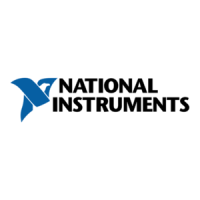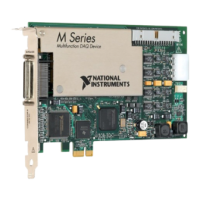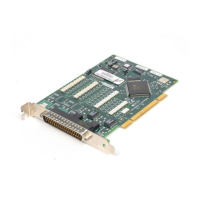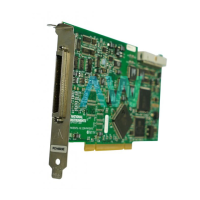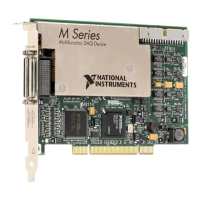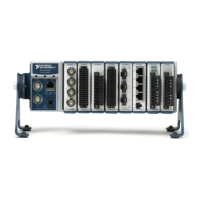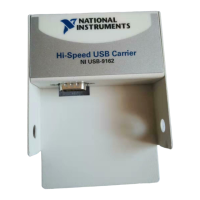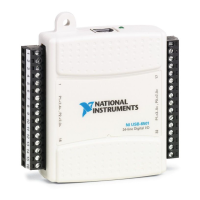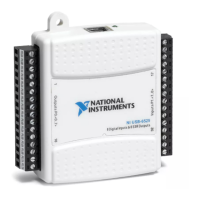© National Instruments | 7-19
X Series User Manual
Again the measurement time for the one counter measurement is lowest, but the accuracy is
lower. Note that the accuracy and measurement time of the sample clocked and two counter large
range are almost the same. The advantage of the sample clocked method is that even when the
frequency to measure changes, the measurement time does not and error percentage varies little.
For example, if you configured a large range two counter measurement to use a divide down of
50 for a 50 k signal, then you would get the accuracy measurement time and accuracy listed in
Table 7-3. But if your signal ramped up to 5 M, then with a divide down of 50, your measurement
time is 0.01 ms, but your error is now 0.1%. The error with a sample clocked frequency
measurement is not as dependent on the measured frequency so at 50 k and 5 M with a
measurement time of 1 ms the error percentage is still close to 0.001%. One of the disadvantages
of a sample clocked frequency measurement is that the frequency to be measured must be at least
twice the sample clock rate to ensure that a full period of the frequency to be measured occurs
between sample clocks.
• Low frequency measurements with one counter is a good method for many applications.
However, the accuracy of the measurement decreases as the frequency increases.
• High frequency measurements with two counters is accurate for high frequency signals.
However, the accuracy decreases as the frequency of the signal to measure decreases. At
very low frequencies, this method may be too inaccurate for your application. Another
disadvantage of this method is that it requires two counters (if you cannot provide an
external signal of known width). An advantage of high frequency measurements with
two counters is that the measurement completes in a known amount of time.
• Measuring a large range of frequencies with two counters measures high and low frequency
signals accurately. However, it requires two counters, and it has a variable sample time and
variable error % dependent on the input signal.
• Again, the measurement time for the one counter measurement is lowest, but the accuracy
is lower. Note that the accuracy and measurement time of the sample clocked and two
counter large range are the same. The advantage of the sample clocked method is that even
when the frequency to measure changes, the measurement time and error % does not. For
example, if you configured a large range two counter measurement to use a divide down of
50 for a 50 kHz signal, then you would get the accuracy measurement time and accuracy
listed in table 7-3. But if your signal ramped up to 5 MHz, then with a divide down of 50,
your measurement time would be 0.01 ms, but your error would now be 0.1%. The error
with a sample clocked frequency measurement is not dependent on the measured frequency
so at 50 kHz and 5 MHz with a measurement time of 1 ms the error % will still be 0.001%.
One of the disadvantages of a sample clocked frequency measurement is that the frequency
to be measured must be at least twice the sample clock rate to ensure that a full period of
the frequency to be measured occurs between sample clocks.
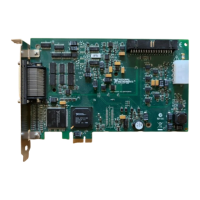
